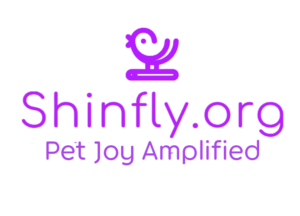Birds don’t have salons, spas or combs — yet they manage to keep their feathers sleek, waterproof, and gorgeous. The secret? Preening — a built-in self-cleaning routine that nature gave them.
🪶 What Is Preening?
Preening is a bird’s regular habit of using its beak (or sometimes feet) to clean, straighten, and oil its feathers.
Here’s what a typical preening session includes:
Aligning feathers / “rezipping” barbules Feathers are made of barbs and barbules with tiny hooks. Sometimes they come apart slightly (e.g. after flying, brushing vegetation). Birds nibble or stroke with their beaks to realign them, so the feather surfaces remain smooth. Distributing oil from the uropygial (preen) gland Most birds have a gland near the base of their tail called the uropygial gland (also called preen gland or oil gland). This gland secretes oily substances (waxes, fatty acids) which birds spread on their feathers. That oil helps waterproof the plumage, keep feathers supple, and may fight microbial growth. Removing dirt, debris & parasites While preening, birds remove dust, mites, lice, dead skin, or other dirt stuck to their feathers. Scratch-preening the head Birds can’t reach their heads with their beaks from behind (since the beak oil comes from the tail area). So many birds use their feet: they spread oil on their foot, then scratch their head with it (called scratch-preening). Some species rub their head directly on the oil gland if reachable.
Over all, birds spend a surprisingly large part of their day on maintenance like preening. In some species, up to 9 % or more of daylight hours is devoted to feather care.
Preening vs Dirty / Filthy Feathers: A Warning Sign
Feather condition is often one of the first signs of a bird’s health. A bird with dull, dirty, or poorly kept feathers may be unwell.
Here’s how to tell the difference between normal preening and a feather problem:
Feature
Healthy / Normal Preening
Dirty / Unhealthy Feathers / Illness Warning
Feather look & texture
Smooth, well-aligned, clean, slight sheen or normal color
Matte, dull, rumpled, discolored, broken or missing barbs
Cleanliness
Minimal stuck debris; no heavy caking of dirt
Matted, caked, clumped dirt, dust, or mud stuck in feathers
Feather loss or breakage
Occasional molt, uniform replacement
Patchy feather loss, broken shafts, missing feathers in odd places
Behavior
Regular preening, normal energy, appetite
Lack of preening, ruffled appearance, lethargy, loss of appetite
Gland / base of tail signs
No swelling or irritation
Swelling, redness, discharge, scabs, lumps near tail base / gland area (uropygial gland problems)
An especially telling sign is if the uropygial gland (preen gland) becomes blocked, inflamed, or infected. In that case:
Feathers may lose waterproofing, become ragged or brittle. The bird may overpreen around the tail area or pick feathers obsessively. A lump, redness, discharge, or bleeding near the opening may be seen.
Thus, filthy or unkempt feathers are a red flag and should prompt a veterinary check, especially in pet birds.
Keywords & SEO Notes (for search)
To help your article rank and reach bird-lovers or pet owners, include some of these high-search keywords naturally:
bird preening how birds clean feathers uropygial gland in birds feather grooming in birds signs of feather problems in pet birds bird health and feather condition pineal gland in birds melatonin bird circadian rhythm
Be sure to repeat some of those phrases (without overdoing) across headings, meta description, and first 200 words to improve SEO.
Final Thoughts
Preening is nature’s built-in “feather spa” — a critical daily ritual that lets birds stay stunning, waterproof, and healthy. But when that routine starts to fail (dirty feathers, patchy loss, gland swelling), it can be an early red flag of illness.

